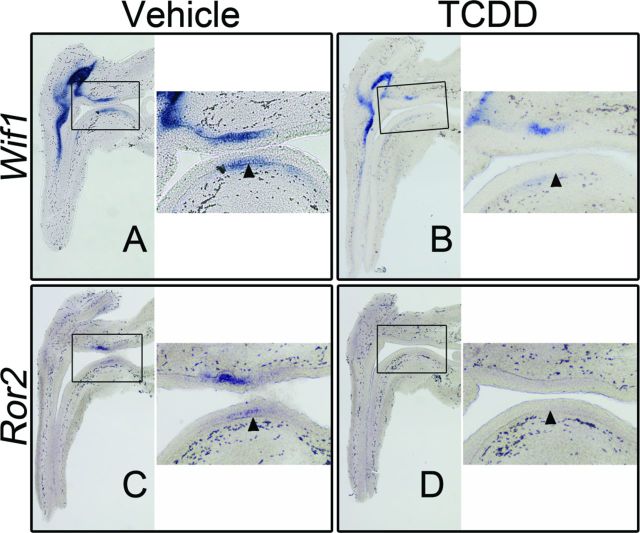FIG. 5.
TCDD reduces transcript abundance of known, Wif1, and putative, Ror2, CTNNB1 signaling target genes in ventral UGS epithelium. C57BL/6J mouse embryos were exposed in utero to vehicle or TCDD (5 μg/kg dam, po) at E15.5 and UGSs were harvested at E16.5. UGSs were sectioned along the sagittal plane and are shown with the urethra on the left pointing down and the bladder on the right. Images are representative of three (Ror2) and six (Wif1) litter-independent UGSs per treatment group. Within each panel, the boxed area in the left image is enlarged on the right. The purple stain marks transcript localization as assessed by ISH and arrowheads point to ventral basal epithelial cells. In vehicle-exposed UGSs, Wif1 transcript is detectable in the ventral epithelium in the same region where nuclear CTNNB1 and LEF1 expression is observed (A). Wif1 RNA abundance is decreased in the ventral epithelium in TCDD-exposed UGSs (B). Similar to Wif1, Ror2 transcript is observed in the ventral epithelium of vehicle-exposed UGSs (C). Exposure to TCDD reduces abundance of Ror2 RNA (D).

